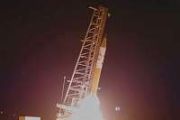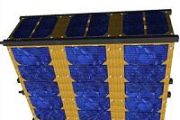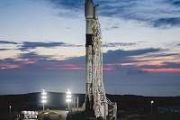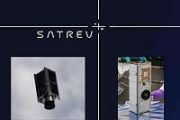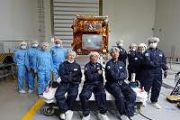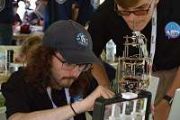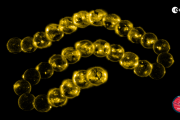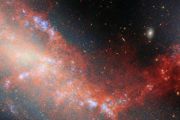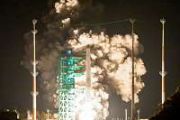
Copernical Team
Psyche, the iron giant of asteroids, may be less iron than researchers thought
 The asteroid 16 Psyche, which NASA intends to visit with a spacecraft in 2026, may be less heavy metal and more hard rock than scientists have surmised, according to a new study by researchers from Brown and Purdue universities.
Psyche, which orbits the sun in the asteroid belt between Mars and Jupiter, is the largest of the M-type asteroids, which are composed chiefly of iron and nickel a
The asteroid 16 Psyche, which NASA intends to visit with a spacecraft in 2026, may be less heavy metal and more hard rock than scientists have surmised, according to a new study by researchers from Brown and Purdue universities.
Psyche, which orbits the sun in the asteroid belt between Mars and Jupiter, is the largest of the M-type asteroids, which are composed chiefly of iron and nickel a NASA's IXPE sends first science image
 In time for Valentine's Day, NASA's Imaging X-Ray Polarimetry Explorer which launched Dec. 9, 2021, has delivered its first imaging data since completing its month-long commissioning phase. All instruments are functioning well aboard the observatory, which is on a quest to study some of the most mysterious and extreme objects in the universe.
IXPE first focused its X-ray eyes on Cassiopeia
In time for Valentine's Day, NASA's Imaging X-Ray Polarimetry Explorer which launched Dec. 9, 2021, has delivered its first imaging data since completing its month-long commissioning phase. All instruments are functioning well aboard the observatory, which is on a quest to study some of the most mysterious and extreme objects in the universe.
IXPE first focused its X-ray eyes on Cassiopeia JILA atomic clocks measure Einstein's general relativity at millimeter scale
 JILA physicists have measured Albert Einstein's theory of general relativity, or more specifically, the effect called time dilation, at the smallest scale ever, showing that two tiny atomic clocks, separated by just a millimeter or the width of a sharp pencil tip, tick at different rates.
The experiments, described in the Feb. 17 issue of Nature, suggest how to make atomic clocks 50 times
JILA physicists have measured Albert Einstein's theory of general relativity, or more specifically, the effect called time dilation, at the smallest scale ever, showing that two tiny atomic clocks, separated by just a millimeter or the width of a sharp pencil tip, tick at different rates.
The experiments, described in the Feb. 17 issue of Nature, suggest how to make atomic clocks 50 times Testing rocks on Earth to help NASA's Perseverance work on Mars
 When NASA's Perseverance Mars rover tried to collect its first rock core sample last August, the outcome presented a puzzle for the mission team: The rover's sample tube came up empty. But why?
Not long after, Perseverance successfully gathered a sample the size of a piece of chalk from a different rock. The team concluded that the first rock they had chosen was so crumbly that the rover's
When NASA's Perseverance Mars rover tried to collect its first rock core sample last August, the outcome presented a puzzle for the mission team: The rover's sample tube came up empty. But why?
Not long after, Perseverance successfully gathered a sample the size of a piece of chalk from a different rock. The team concluded that the first rock they had chosen was so crumbly that the rover's Sols 3388-3390: Pediment Passage
 Curiosity is advancing westward through a largely boulder-strewn channel that is leading us toward the Greenheugh Pediment. The Pediment is where our rover will spend the next many months, as we turn back uphill to the south and continue our ascent up Mt. Sharp. Despite it being quite craggy in our current location, we did have to drive over a large sand patch to get to our current parking locat
Curiosity is advancing westward through a largely boulder-strewn channel that is leading us toward the Greenheugh Pediment. The Pediment is where our rover will spend the next many months, as we turn back uphill to the south and continue our ascent up Mt. Sharp. Despite it being quite craggy in our current location, we did have to drive over a large sand patch to get to our current parking locat Vaya Space completes first suborbital test flight
 Vaya Space announced the successful launch of its hybrid rocket from Mojave, California on January 29th, 2022 operating under an existing FAA waiver. The suborbital flight demonstrated its hybrid rocket design using 3D printed fuel grains created from recycled thermoplastics. This launch paves the way for rapid acceleration of Vaya Space's go-to-market strategy as the Company scales for producti
Vaya Space announced the successful launch of its hybrid rocket from Mojave, California on January 29th, 2022 operating under an existing FAA waiver. The suborbital flight demonstrated its hybrid rocket design using 3D printed fuel grains created from recycled thermoplastics. This launch paves the way for rapid acceleration of Vaya Space's go-to-market strategy as the Company scales for producti Digi-Key to distribute EPC Space Rad Hard devices worldwide for space applications
 EPC Space has announced that Digi-Key Electronics will be a global distributor for EPC Space's line of radiation hardened (rad hard) GaN-on-silicon transistors and ICs, packaged, tested, and qualified for satellite and high-reliability applications.
Spanning a range of 40 V to 300 V, EPC Space offers a family of rad hard enhancement mode power transistors. These power transistors demonstra
EPC Space has announced that Digi-Key Electronics will be a global distributor for EPC Space's line of radiation hardened (rad hard) GaN-on-silicon transistors and ICs, packaged, tested, and qualified for satellite and high-reliability applications.
Spanning a range of 40 V to 300 V, EPC Space offers a family of rad hard enhancement mode power transistors. These power transistors demonstra Aerojet Rocketdyne positioned to continue driving growth, profitability and value creation
 Aerojet Rocketdyne Holdings, Inc. has reaffirmed its strong foundation for substantial value creation following the termination of its merger agreement with Lockheed Martin Corporation. The Company issued the following statement:
We are poised to deliver substantial value to our shareholders driven by our continued leadership in key space exploration and defense growth markets, including b
Aerojet Rocketdyne Holdings, Inc. has reaffirmed its strong foundation for substantial value creation following the termination of its merger agreement with Lockheed Martin Corporation. The Company issued the following statement:
We are poised to deliver substantial value to our shareholders driven by our continued leadership in key space exploration and defense growth markets, including b How to design a sail that won't tear or melt on an interstellar voyage
 Astronomers have been waiting decades for the launch of the James Webb Space Telescope, which promises to peer farther into space than ever before. But if humans want to actually reach our nearest stellar neighbor, they will need to wait quite a bit longer: a probe sent to Alpha Centauri with a rocket would need roughly 80,000 years to make the trip.
Igor Bargatin, Associate Professor in t
Astronomers have been waiting decades for the launch of the James Webb Space Telescope, which promises to peer farther into space than ever before. But if humans want to actually reach our nearest stellar neighbor, they will need to wait quite a bit longer: a probe sent to Alpha Centauri with a rocket would need roughly 80,000 years to make the trip.
Igor Bargatin, Associate Professor in t James Webb telescope going through cooling process
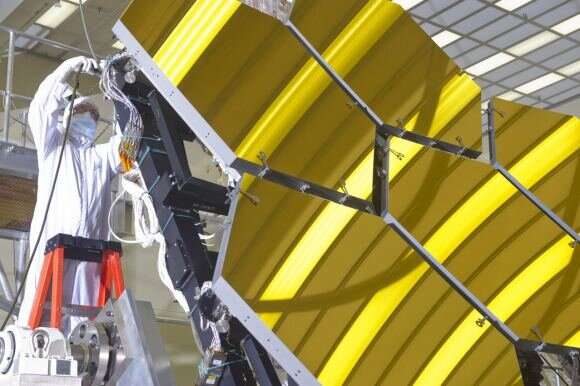
Cooling things down in space is trickier than it might sound. But that is exactly the process the James Webb telescope is going through right now. Getting down to cryogenic temperature is imperative for its infrared imaging systems to work correctly. While the telescope has already started, it will be another few weeks before the process is complete and it's ready to start capturing its first groundbreaking infrared images of the universe.
That might seem like an exceptionally long time to cool something down, but it's all part of the difficulty of doing so in space. The first tricky point is getting out of the sun, which can heat equipment up to blistering temperatures if it is exposed to direct sunlight. Luckily, James Webb has a specially designed sun shield to keep it out of direct sunlight.
The rest of the telescope's instruments have been cooling since the sunshield was deployed several weeks ago.






